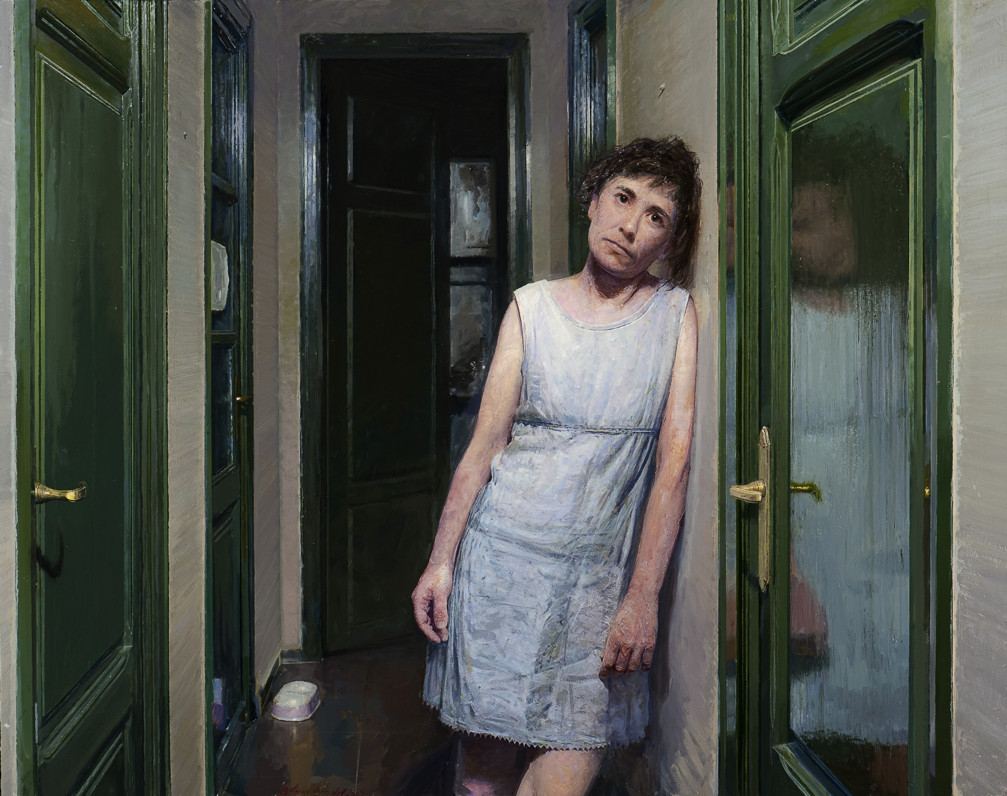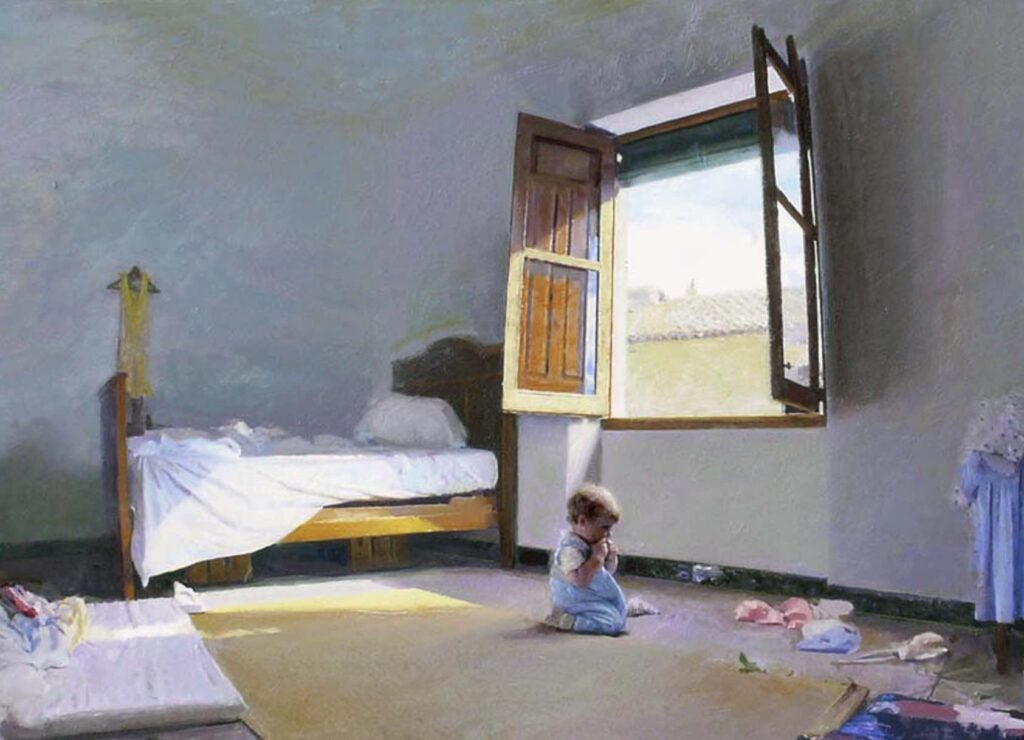Self-taught Golucho

He goes by a single name, like Madonna or Bono or Sting, the contemporary Spanish master, Golucho, completely self-taught and mostly under-the-radar if you try to learn more about him on-line. One finds little written about him, but he’s considered part of the New Realism, with Antonia Lopez Garcia in the forefront of the movement. His work is less astringent that Garcia’s, more willing to use unnatural tones of color to evoke a response that moves the viewer beyond one’s initial amazement over his boldly persuasive technique. It’s easier to think of Garcia as a photo-realist, though Golucho likely is working at least partly from photographs of his subjects. His use of color varies from restrained to lush, from beautiful to assertive, and his drawings of aged bodies seem to descend from the Northern Renaissance yet don’t look coldly clinical. Occasionally he emerges from his information embargo to teach briefly and then withdraw: once at the New York Academy of Art in 2009 and then with a group of Chinese students who came to Spain in 2017 for a week of instruction hosted by the International Arts and Culture Group based in Florence, Italy.
 His figures and still lifes are frequently lit from overhead, and both are startlingly vivid with brushwork that seems to be almost Tonalist, layer upon layer over surfaces he scores and scratches. His mastery reminds me of Jerome Witkin but his brushwork is less bravura, and his compositions are simplified and often almost vacant except for a human figure and a few indications of a room with random furniture: figures that look as if they are on a stage in the middle of a Beckett play. His few translated comments are more profound than most artist statements. In one he sounds like Hemingway on the art of writing: “The best part of painting is what hasn’t been painted.” One could take that enigmatic pronouncement a number of ways, syntactically: what’s left out as a result of the artist’s skill, what’s yet to be done by future painters, what remains to be done to a given painting but is yet to appear. A longer comment aims at the heart of painting, the quality no amount of art criticism can pin down or reliably identify:
His figures and still lifes are frequently lit from overhead, and both are startlingly vivid with brushwork that seems to be almost Tonalist, layer upon layer over surfaces he scores and scratches. His mastery reminds me of Jerome Witkin but his brushwork is less bravura, and his compositions are simplified and often almost vacant except for a human figure and a few indications of a room with random furniture: figures that look as if they are on a stage in the middle of a Beckett play. His few translated comments are more profound than most artist statements. In one he sounds like Hemingway on the art of writing: “The best part of painting is what hasn’t been painted.” One could take that enigmatic pronouncement a number of ways, syntactically: what’s left out as a result of the artist’s skill, what’s yet to be done by future painters, what remains to be done to a given painting but is yet to appear. A longer comment aims at the heart of painting, the quality no amount of art criticism can pin down or reliably identify:
The problem with realism is that everyone believes that they understand it, they think before a realistic picture that its aim is the mere representation of everyday life. On the other hand, abstraction makes the viewer become humble and say ‘I don’t understand it’ and in that way, by not discovering that picture, they’re closer to the testimony of that work, but when it comes to quickly ‘understanding’ the painting, there is realism. The conclusion is that the viewer stays on the surface of what is represented and this work can be left in mere appearance and in technical ability.
What he appears to mean is that critical attention can focus on nothing but appearance and technical skill. What many might understand from these words would be: it’s easier to understand what greets you visually with a realist painting, it’s recognizable and that’s a great part of the pleasure, but simply transcribing the look of things isn’t the point. Abstraction can be puzzling and therefore brings the viewer closer to the actual mystery of painting, the way appearances point toward something less visible (something that isn’t intellectual content). But privileging abstraction pushes aside what feels like easily understood realism as a lesser form of painting, mere copying. What he’s likely saying is that “understanding” isn’t the point. The point is to see what’s being shown through what’s depicted, and that remains mysterious but the actual aim of the painter. You behold something you can’t carry away as knowledge. It isn’t available to intellectual analysis or description. To engage with it, you have to keep looking.
Comments are currently closed.